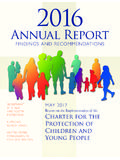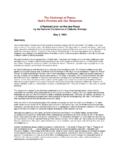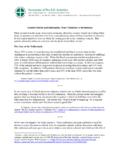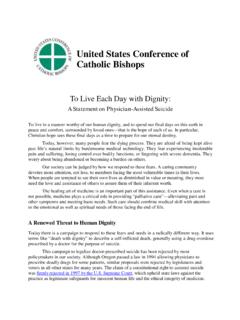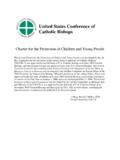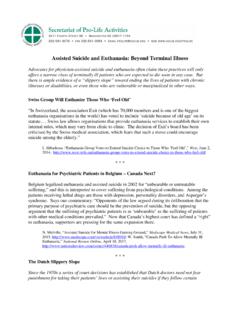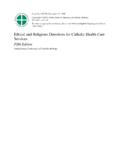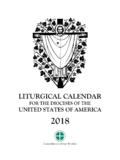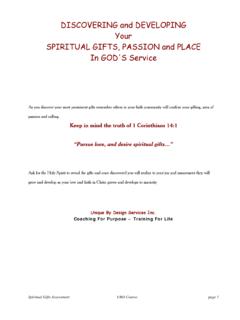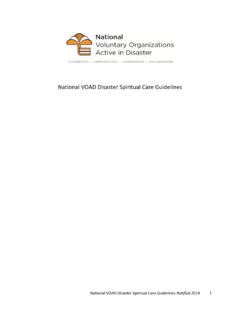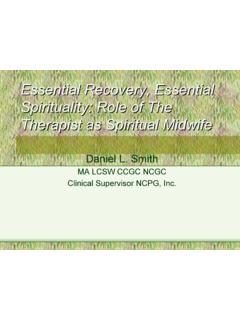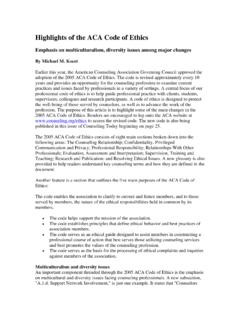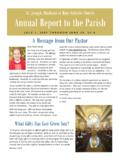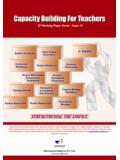Transcription of Sacramental Preparation Protocol III, Confirmation
1 1 Sacramental Preparation Protocol III, Confirmation A Working Instrument of the Subcommittee on the Catechism Approved June 9, 2013 2 Protocol FOR ASSESSING THE CONFORMITY OF CATECHETICAL MATERIALS WITH THE CATECHISM OF THE CATHOLIC CHURCH INTRODUCTION In his apostolic constitution, Fidei depositum, Pope John Paul II points out that the Catechism of the Catholic Church is meant to encourage and assist in the writing of new local catechisms, which take into account various situations and cultures, while carefully preserving the unity of faith and fidelity to Catholic doctrine (Pope John Paul II, Fidei depositum, #3).
2 In light of this objective and the charge of the Administrative Committee of the National Conference of Catholic Bishops, the Subcommittee on the Catechism is reviewing catechetical materials voluntarily submitted as to their conformity with the Catechism of the Catholic Church. To guide this process and to provide as objective an instrument as possible, the Subcommittee on the Catechism has developed this Protocol for Assessing the Conformity of Catechetical Materials with the Catechism of the Catholic Church, Sacramental Preparation III, Confirmation , as a working instrument. This working instrument has been derived from previously approved documents. The following points introduce some important caveats in the use of the Protocol in the review of catechetical materials: As far as possible, the evaluative points of reference employ the language of the Catechism of the Catholic Church in order to underscore its dependence on the Catechism A text for Preparation for the Sacraments should only be used as supplementary to a basal text presenting all of the material to be covered in a given year of a catechetical program.
3 The assessment is concerned only with the content of the catechetical materials and, like the Catechism, does not consider the adaptation of doctrinal presentations and catechetical methods (Catechism of the Catholic Church,#24) 3 PART ONE PRINCIPLES OR CRITERIA TO ENSURE CONFORMITY WITH THE BASIC THEOLOGICAL STRUCTURE OF THE CATECHISM OF THE CATHOLIC CHURCH According to our Guidelines for Doctrinally Sound Catechetical Materials, the first principle for assessing the conformity of catechetical materials to the Catechism of the Catholic Church is that the Christian message be authentic. For expressions of faith and moral teachings to be authentic, they must be in harmony with the doctrine and traditions of the Catholic Church, which are safeguarded by the bishops who teach with a unique authority (Guidelines for Doctrinally Sound Catechetical Materials, United States Catholic Conference, ).
4 AUTHENTICITY In order for catechetical materials developed from the Catechism to be authentic, the following criteria should be observed: Minimally, the catechetical materials should contain nothing contradictory to the Catechism They should encourage and assist in the development of a common language of faith within the Church They should promote a healthy and vital Catholic identity in such a way that the believer is encouraged to hear the message clearly, live it with conviction and share it courageously with others Since the Catechism should not be reduced to its in brief sections, catechetical materials should evidence the wider context of teaching from which the in brief sections are drawn In order for catechetical materials developed from the Catechism to be authentic.
5 The theological structure as indicated below should be at least implicit in the catechetical materials: Trinitarian organization The Catechism does not simply treat of the Holy Trinity when it treats of God or expounds the creed. The creative and saving initiative of God the Father, the salvific mission of God the Son and the sanctifying role of God the Holy Spirit permeate the Catechism s treatment of worship and liturgy, the life of grace underpinning the moral life and the life of prayer. Christological centrality The Catechism breathes the person, life and mission of Jesus Christ. The entire Catechism is a breaking open of the mystery of the Word made flesh.
6 Christ is presented as fully God and fully man. Ecclesial context 4 The Catechism s treatment of the Church is not restricted to a commentary on the article of faith in the Creed that focuses on the Church. The entire Catechism presents the continuing presence and mission of Christ in and through the Church by the power of the Holy Spirit. Adherence to Christ through faith involves immersion in the life of the Church. Treatment of the sacraments within the paschal mystery The Catechism presents as an underlying and unifying motif in its treatment of the sacraments the Christian s participation in the paschal mystery of Jesus Christ. Sacraments receive their origin and receive their efficacy in relationship to the paschal mission of the Savior and his presence in the Sacramental encounter with his people.
7 Presentation of the moral life in the personal and social teachings of the Church as a new life in the Holy Spirit The Catechism makes clear that the moral life is not a merely human endeavor nor is it simply a series of dos and don ts. It is rooted in a real new life made possible by the presence of the Holy Spirit and the gift of grace within the human person. The Church s teachings on the dignity of human life related to the section on the 5th Commandment The Church s teaching and commitment to life should be integrated into the treatment of moral life, and the nuances provided should show both the distinctiveness and the relationship of the various life issues to one another.
8 The Church s teachings on human sexuality related to the section on the 6th and 9th Commandments The Catechism treats human sexuality within the context of education in sexual morality. This arrangement now supersedes the development of separate segments on education in human sexuality apart from the moral teaching. The Church s teaching on social justice related to the section on the 7th and 10th Commandments The Catechism offers a succinct presentation of the Church s teaching on social justice both in the introduction to the Commandments and in the treatment of the 7th and 10th Commandments. This presentation also preserves the relationship between teaching and social justice with the rest of the moral teaching of the Church.
9 5 COMPLETENESS The second principle for assessing the conformity of catechetical materials to the Catechism is that the Christian message be complete (Guidelines, ). In order for catechetical materials developed from the Catechism to be considered complete, the doctrines of the Church should be presented as an integrated whole and there should be an intrinsic cohesiveness to the presentation of the faith: The materials for Sacramental Preparation should reflect the second pillar of the Catechism of the Catholic Church. They should also include an appropriate presentation of the rootedness of the teaching in Sacred Scripture They should reflect in an appropriate manner the variety and multiplicity of the sources of the faith found in the Catechism, for example, the teachings from the Councils, the Eastern and Western Fathers, liturgical texts and spiritual writings They should show that God s love is revealed primarily in the Word made flesh, Jesus Christ They should give proper importance to the biblical, anthropological, liturgical, moral and spiritual.
10 As well as to the ecumenical and missionary dimensions of the Catechism These principles and criteria are the most fundamental ways in which catechetical materials should reflect the Catechism of the Catholic Church. They touch the underlying theological teaching and give spirit to the specific content which Part Two fleshes out in a more concrete way. 6 PART TWO EVALUATIVE POINTS OF REFERENCE FOR AUTHENTICITY AND COMPLETENESS The points of reference are intended to guide both reviewers and publishers in assessing the conformity of the catechetical materials to the Catechism of the Catholic Church. On the pages that follow, the first column, marked Evaluative Points of Reference for Authenticity and Completeness, contains the doctrine which should be treated in the materials.
